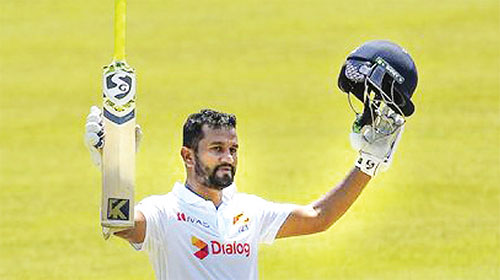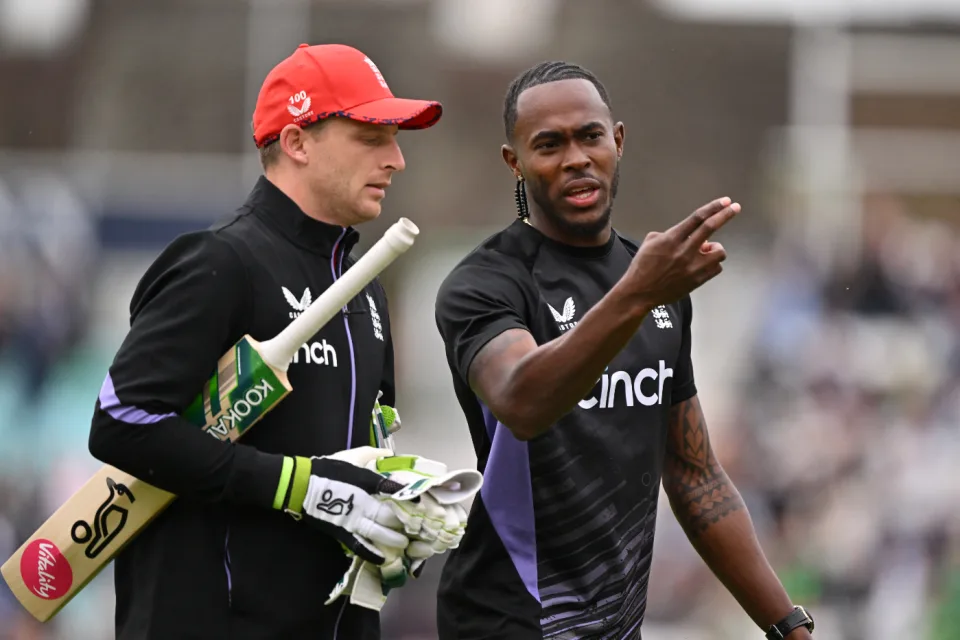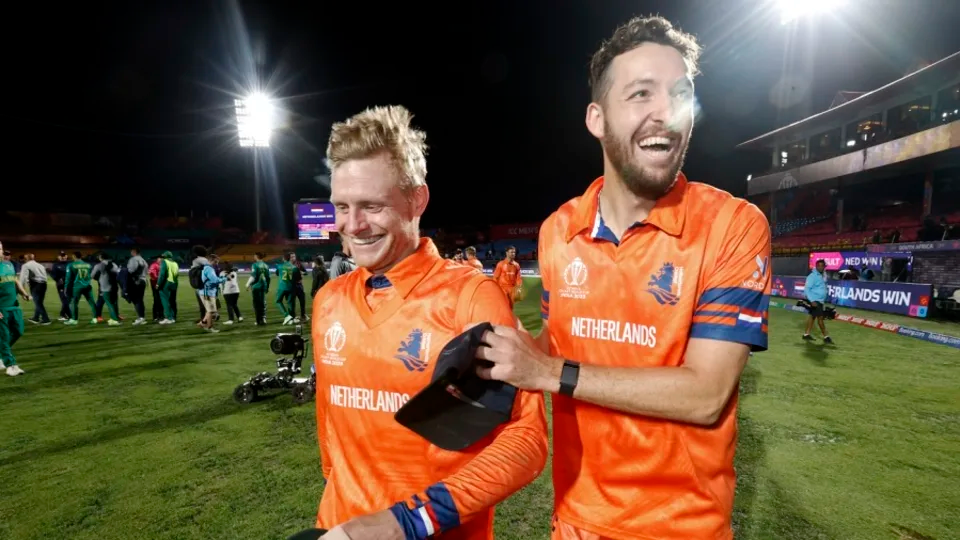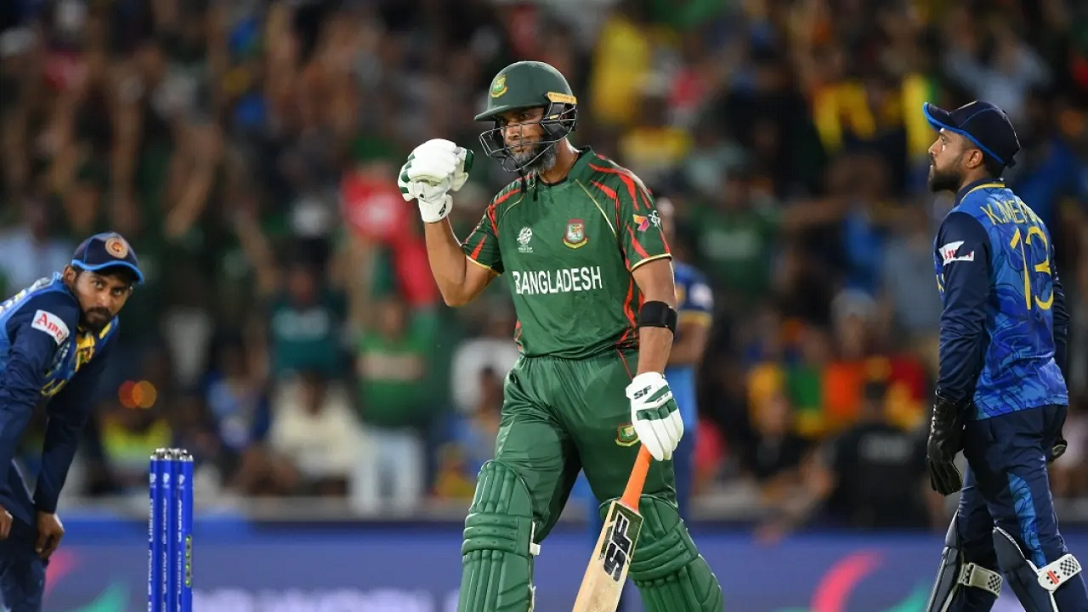Sports
Karunaratne joins Sri Lanka’s 10-man 5000 Test-run club

Dimuth Karunaratne crossed the 5000 run milestone on Thursday (29)
Dimuth Karunaratne has become the 10th Sri Lanka batsman to score 5000 runs in Test cricket and the fourth fastest to do so in terms of matches played. Take a look at the exclusive group he has joined.
Dimuth Karunaratne
5000* runs at 37.88
5000th run in his 72nd Test and 138th innings
The newest member in Sri Lanka’s 5000 Test-run club, Karunaratne crossed the milestone in Sri Lanka’s first innings of the second match against Bangladesh.
Having only celebrated his 33rd birthday in March, Karunaratne is Sri Lanka’s 10th highest run-scorer in the format and still has time to climb that ladder.
The left-hander looks good value to do just that considering he scored a double-century in the first Test against Bangladesh. He has 11 centuries to date and is enjoying one of the finest calendar years of his career.
Arjuna Ranatunga
5105 runs at 35.69
5000th run in his 92nd Test and 153rd innings
One of the nation’s most iconic players, an 18-year-old Ranatunga made his debut in Sri Lanka’s first-ever Test in 1982. He notched Sri Lanka’s first Test half-century in that match. More than 18 years later he raised his 5000th run for the country in Test cricket in his penultimate match for Sri Lanka.
Among the greatest contributors to Sri Lankan cricket ever, Ranatunga famously captained the team to a stunning ICC Cricket World Cup victory in 1996.
Thilan Samaraweera
5462 runs at 48.76
5000th run in 71st Test and 114th innings
Solid as a rock, Samaraweera was the glue in a Sri Lankan batting order boasting some of the most stylish players in the game, while still having plenty of glorious strokes in his own arsenal. A century-maker on debut against India, Samaraweera went on to hit 14 hundreds in the format, with a high score of 231.
The right-hander raced to 5000 Test runs in fewer matches than any Sri Lankan bar Kumar Sangakkara and Mahela Jayawardene.
Tillakaratne Dilshan
5492 runs at 40.98
5000th runs in his 81st Test and 132nd innings
A middle-order batter when he was first picked in the team, Dilshan looked the part early in his career, scoring an impressive 163 in just his second match. But it was not until he was promoted to the top of the order that Dilshan’s career really took off. He averaged 44.29 across his 53 innings opening the batting and allowed Sri Lanka to put opposition attacks under pressure from ball one. All that and he was an exceptional fielder and more than handy bowler too.
Marvan Atapattu
5502 runs at 39.02
5000th run in his 80th Test and 138th innings
One half of Sri Lanka’s most fruitful opening pair, Atapattu was the ice to Sanath Jayasuriya’s fire, wearing opposition attacks down from one end while his partner flayed them from the other. The old-school opener was one of cricket’s great converters, turning 16 of his 33 50+ scores into hundreds, and six of those 16 centuries into doubles.
Angelo Mathews
6219* runs at 45.39
5000th run in his 75th Test and 133rd innings
Up until Karunaratne’s entry, Mathews was the most recent Sri Lankan to join the 5000 Test run club, getting there in mid-2018. As reliable a servant to the game as any who has ever represented the island nation, Mathews started his career as the complete all-rounder in 2008. While a run of injuries has stymied his bowling over the past few years, he remains a lock in Sri Lanka’s XI.
Already the fifth-highest run-scorer in Sri Lanka’s Test history with an average that currently sits fourth among them, he already stands as one of the nation’s finest ever performers.
Aravinda de Silva
6361 runs at 42.97
5000th run in his 74th Test and 128th innings
The hero of Sri Lanka’s glorious victory in the 1996 World Cup final, de Silva was one of the gems of the country’s Test batting order for nearly two decades. With a technique that could stand up to the sternest of examinations, he scored 20 centuries and 22 fifties across his 93 Tests.
The dashing star was the first Sri Lankan to ever score 5000 runs.
Sanath Jayasuriya
6973 runs at 40.07
5000th run in his 79th Test and 133rd innings
Before there was Steve Smith there was Sanath Jayasuriya – a player picked as a bowling all-rounder who would go on to become a batting great. One of the stars of the ‘96 World Cup, Jayasuriya took his Test cricket to the next level in the years that followed as Sri Lanka established themselves as a force to be reckoned with across formats.
His incredible 340 off 578 against India in 1997 was Sri Lanka’s first Test triple-century and it remains the second-highest score by a Sri Lankan batsman.
Mahela Jayawardene
11,814 runs at 49.84
5000th run in his 70th Test and 114th innings
A modern giant of the game, Jayawardene is Test cricket’s ninth-highest run-scorer and joint sixth-greatest century-maker, well and truly justifying the clamour that surrounded him when he debuted as a 19-year-old.
A remarkable player of spin and more than adept against pace, Jayawardene scored runs all around the wicket and his combination with Kumar Sangakkara stands among the most reliable cricket has seen. Fittingly, the pair boasts the record for the biggest stand in Test history, putting on 624 runs against South Africa in Colombo.
That same innings saw Jayawardene score 374 runs – the fourth-highest score in Test history.
Kumar Sangakkara
12,400 runs at 57.40
5000th run in his 64th Test and 106th innings.
A member of the ICC’s Test Team of the Decade, Sangakkara stands among cricket’s finest ever players with a case to be considered the best batsman of his generation.
Across 134 Tests he scored 12,400 runs at 57.40, finishing his career as the format’s sixth greatest run-scorer with comfortably the best average of anyone who scored more than 10,000 runs. Those statistics are all the more remarkable when you consider he had to keep wickets in 48 Tests. He scored 9283 runs at 66.78 in Tests where he was not the designated keeper.
Sangakkara raced to 5000 runs in just 64 Tests and 106 innings – comfortably the fastest of any Sri Lankan.
(ICC)
Sports
England face Australia in the battle of champions

The first truly heavyweight clash of this expanded T20 World Cup format comes freighted with both history and subplots. A rematch of the 2010 World T20 final at Kensington Oval, the match pits Jos Buttler’s defending champions – who are aiming to become the first team to retain the trophy – against the Australian winning machine, victors at the 2021 edition and current world title-holders in Test and ODI cricket. And that’s before you throw in the Ashes for afters.
Already there is added pressure on England, after the rain in Bridgetown led to a share of the points in their opener against Scotland (and that having conceded 90 runs from 10 overs without taking a wicket in a tepid bowling display). Lose to their oldest rivals and it will leave their Super 8 prospects open to being waylaid by the perils of net run-rate calculations, or worse.
The Scotland match was the third abandonment in five suffered by England, after a rain-affected home series against Pakistan, which has clearly hampered their readiness for this campaign after almost six months without playing T20 together. It does not take much for a side to click in this format – and England looked in decent shape when they did get on the field against Pakistan – but Buttler will be anxious for things to go their way on Saturday, if only to avoid further questions referencing the team’s disastrous ODI World Cup defence last year.
Australia, under the laidback leadership of Mitchell Marsh would love nothing more than to add to the English sense of jeopardy – having helped bundle them out of the tournament in India on the way to taking the crown. Their head to head record is less impressive in T20 however, with England having won six of the last seven completed encounters, as well as that 2010 final.
Despite a wobble with the bat, Australia avoided mishap against Oman earlier in the week, the experience of David Warner and Marcus Stoinis shining through in difficult batting conditions. Surfaces in the Caribbean – not to mention those games staged in the USA – have already had teams scratching their heads; rather than the “slug-fest” England had prepared for, following a high-scoring tour of the Caribbean in December, it looks as if boxing smart may be the way to go.
Speaking of Warner, this could be the last time he faces up against England in national colours – and another match-winning contribution would likely reduce the chances of them meeting again in the knockouts. On the other side of the card is Jofra Archer, fresh from an emotional maiden outing at Kensington Oval and ready to take on Australia for the first time in any format since 2020. Can Mark Wood fire up England’s campaign, as he did during last summer’s Ashes? Will Pat Cummins be back to harass the old enemy once again? Seconds out, it’s almost time to rumble.
Cummins is set to return after being rested for the Oman game, which saw Mitchell Starc leave the field with cramp. Starc is understood to be fine and could keep his place – which would likely see Nathan Ellis miss out. Marsh is still not fit to bowl, with Australia likely to continue with the allrounder combination of Stoinis and Maxwell to give them cover.
Australia (probable XI): David Warner, Travis Head, Mitchell Marsh (capt), Glenn Maxwell, Marcus Stoinis, Josh Inglis (wk), Tim David, Pat Cummins, Nathan Ellis/Mitchell Starc, Adam Zampa, Josh Hazlewood
The one change England may consider is Reece Topley coming in for Wood, with the expectation that there will be some rotation among the seamers through the course of the tournament.
England (probable XI): Phil Salt, Jos Buttler (capt & wk), Will Jacks, Jonny Bairstow, Harry Brook, Liam Livingstone, Moeen Ali, Chris Jordan, Jofra Archer, Adil Rashid, Reece Topley/Mark Wood
[Cricinfo]
Sports
South Africa up against their bogey team in batter-unfriendly New York

Once is coincidence, twice is a clue, and three times is proof.
To paraphrase Agatha Christie, that is the narrative around South Africa’s meeting with Netherlands at this T20 World Cup.
The Dutch beat South Africa at the 2022 tournament and ended their semi-final hopes in a match where South Africa appeared to be sleep walking, and then beat them again at the 2023 ODI World Cup, where they exposed South Africa’s vulnerability in the chase. If they to do the treble, not only will Netherlands take the lead in Group D, but they will offer conclusive evidence of the threat they pose to Full Members, especially South Africa.
Of course, it will take some doing after South Africa’s opening performance against Sri Lanka, where they reduced their opposition to their lowest T20I total and chased it down in fairly straightforward fashion thanks to the most stable middle-order of their white-ball era. In Aiden Markram, Tristan Stubbs, Heinrich Klaasen and David Miller, South Africa have bankers and big-hitters and, for this match, they also have the advantage of experience. They’ve already played at Eisenhower Park, and have first-hand knowledge that run-scoring doesn’t come easily;Klassen said they are prepared to use their “cricket brains” and play “smarter cricket”.
But the conditions could be good news for Netherlands, who are not naturally a line-up of big hitters and build their innings on a foundation of turning ones into twos. In other words, they tend to take a slightly more conservative approach to batting, which may work well here, but they’ll be wary of the uneven bounce of the surface and will have to come up with plans to counterattack especially against South Africa’s seamers. Their own bowlers were exemplary in Dallas and will look to build on that performance against a line-up that will likely be more proactive than Nepal’s, but who they have managed to keep quiet not once, but twice in the past. Third time’s the charm, they say.
Anrich Nortje’s stunning return to form against Sri Lanka means South Africa may not have to tinker with the bowling combination, and Gerald Coetzee and Tabraiz Shamsi may have to wait their turns to get a game. The batting line-up should be unchanged, with no space for Ryan Rickelton yet.
South Africa: Quinton de Kock (wk), Reeza Hendricks, Aiden Markam, Tristan Stubbs, Heinrich Klaasen (wk), David Miller, Marco Jansen, Keshav Maharaj, Kagiso Rabada, Ottneil Baartman, Anrich Nortje
Conditions in New York may tempt Netherlands to include an extra seamer and they have Kyle Klein in their squad. But it could come at the expense of a shortened batting line-up and they may not want to risk that.
Netherlands: Michael Levitt, Max O’Dowd, Vikramjit Singh, Sybrand Engelbrecht, Scott Edwards (capt, wk), Bas de Leede, Teja Nidamanuru, Logan van Beek, Tim Pringle, Paul van Meekeren, Vivian Kingma
[Cricinfo]
Latest News
Mustafizur, Rishad, Hridoy dazzle in Bangladesh’s tight two-wicket win over Sri Lanka

Nuwan Thushara’s last over brought Sri Lanka screaming back into the match,as he first bowled Rishad Hossain, and then nailed Taskin Ahmed in front of the stumps with a pinpoint swinging yorker. This left Bangladesh eight wickets down, with 12 runs still to get.
However, the experienced Mahmudullah was at the crease for Bangladesh, and despite some further nervy moments, pushed Bangladesh across the line off the last ball of the 19th over.
But this was a match chiefly decided by Bangladesh’s own outstanding bowling. Mustafizur Rahman was the best among them, using shorter lengths and his cutters efficiently, to claim figures of 3 for 17. Rishad Hossain’s three-for through the middle overs also kept Sri Lanka quiet.
Mustafizur was instrumental in Sri Lanka’s downward spiral through the middle overs, which culminated in a crash-and-burn end. Ultimately, their inability to find boundaries, or even rotate strike against good Bangladesh bowling resulted in their downfall. A score of 125 for 9 always seemed poor on a decent pitch, even if their bowlers made a match of it in the end.
Brief scores:
Bangladesh 125 for 8 in 19 overs (Towhid Hridoy 40, Litton Das 36; Dhanajaya de Silva 1-11, Nuwan Thushara 4-18, Wanidu Hasaranga 2-32, Matheesha Pathirana 1-27) beat Sri Lanka124 for 9 in 20 overs (Pathum Nissanka 47, Dhananjaya de Silva 21; Tanzim Hasan Sakib 1-24, Taskin Ahmed 2-25, Mustafizur Rahman 3-17, Rishad Hossain 3-22) by two wickets
[Cricinfo]












